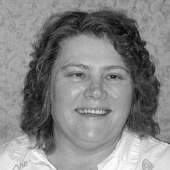Shaking the sieve on genealogy
Hi neighbors.
I often watch television documentaries about archaeology digs and have noticed that they will take tons of sand, dirt, dust and small rocks and shake them through a sieve to find tiny bits of ceramics, animal bones, etc.
Anthropologists and biologists do this to find tiny pieces of once living ancient people or animals like dinosaurs and Neanderthals.
They do this on crime shows about finding long dead bodies as well and show them looking for bones and teeth.
Gold miners use a form of this method as well when they run water and silt through a sieve to discover gold or other minerals.
It occurred to me that this scientific method would also be useful in genealogy. Not for finding gold or teeth and cookware from my ancestors (although that would be pretty cool) but for sorting through piles of papers to find tiny gems of research relevant to my own database.
The early days of my genealogy research were not very organized.
Like most newbies, I collected anything and everything that contained a mention of any of the surnames I was looking for, with little regard to listing sources or contact names.
Most of these loose leaf papers were added to the database quickly and just as quickly forgotten. Once information was "in a safe place" a.k.a, my database, I figured it was OK to let it go.
Some tiny voice of reason kept telling me never to throw away a paper trail to the past so I saved tons of paper in large plastic boxes. Thank goodness!
Three computer deaths later, I have learned to not only save the papers, but to make CD copies of my database often and to mail off copies of those CDs to my children and any other family members who showed a tiny interest in genealogy.
The friend of mine who "turned me on" to genealogy and computer databases had the great habit of printing off every family group sheet as she entered it into her database.
In hindsight, she's a lot smarter than I thought at the time when I still had a dogmatic faith in computers.
Although I don't print off my family group sheets each time I make a change, I have printed off many three-inch notebooks full of family information: group sheets, census records, death, marriage and birth information, oral history stories, newspaper articles and photos. These are all safely stored on my home library shelves.
They should remain safe and sound as long as they don't get blown away in a tornado, washed away by a flood, buried by an earthquake or turned to ashes in a fire. (Good idea to send out those CDs far away from the printed forms.)
That's all well and good you say, but what about the sieving reference mentioned in the beginning of this column?
After stubbing my toe on the plastic box once too often, having the computer tower fall on my foot and hurting my wrist grabbing one of the falling notebooks, it occurred to me that there had to be a single way to incorporate all of those papers (copies of primary sources as well as printed info from my database) into a more user friendly type of product.
Since the notebooks were already there, I decided to incorporate all the census lists, death certificates, obituaries, photos, etc., into them.
This is not easy, as in overwhelmingly not easy. Like using a toothbrush to clean dirt off of artifacts buried 20 feet deep, it is very time consuming, eye straining and back breaking.
I have decided to include my photo albums in the process and put faces to the names of the people in my database. It should be great when I finish it several years from now.
Then all I will have to do is make many copies for my children and my opus will be completed! Well, until I find something or someone new to add to the mix.
Until the next time friends remember to save the names, addresses and emails of anyone you share research with -- and the surnames they are researching.
I guess I should put that list into the notebooks as well ... oh boy!

